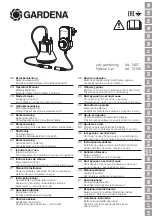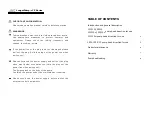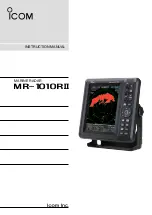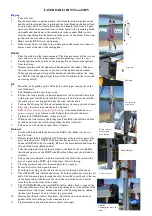
Page
111
of
133
Version 3.0 REV r000
Date 25-08-2010
12.2.3
Reverberation and Scattering
The sea is not homogenous in nature. Everything from suspended dust particles to fish, from the sea
surface to the sea floor will scatter, that is reradiate, the acoustic energy. All of the effects of
individual scattering can be termed reverberation. The effect of reverberation is to lessen the
acoustic energy and this leads to transmission losses.
Reverberation is divided into three main areas: sea surface reverberation, bottom reverberation,
and volume reverberation (the body of water that the energy is passing through).
Both the sea surface and the sea bottom will reflect and scatter sound, thus affecting the
propagation of sound. Sea surface scattering is influenced by how rough the sea is (which is related
to wind velocity) and also the trapped air bubbles in the near surface region. The sea surface is also
a good reflector of acoustic energy; this can lead to second and even tertiary bottom returns as the
bottom return acoustic energy is reflected by the sea surface and is then reflected once more by the
sea bottom.
In the case of the sea floor, the strength of the scattering depends on the type of bottom
(composition and roughness), the grazing angle of the acoustic pulse and the operating frequency of
the sonar.
There is also bottom absorption based on the sea floor terrain and composition. Bottom absorption
is also dependent on the operating frequency of the sonar and the angle of incidence. Bottom
absorption will be greater for a higher frequency and large angle of incidence. It is more or less
intuitive that a mud bottom will absorb more of the acoustic energy than a rocky bottom. When the
acoustic energy is absorbed it means there is less that will be reflected back to the Sonic
2024/2022’s receivers. The surveyor must be aware of the bottom composition as adjustments can
be made to the Sonic 2024/2022 operating parameters to help compensate for the bottom
absorption.
In waters with a large sediment load, the suspended particles will scatter the sound wave, thus
leading to transmission loss. In the scattering process, there is also a degree of energy that it is
reflected (backscatter); this can be a cause for ‘noise’ in the sonar data. Again, the surveyor should
be aware of this condition and, if need be, change the operating parameters of the Sonic 2024/2022.
When discussing the changing of the operating parameters, it is generally a matter of increasing
transmit power or pulse length to get more total power into the water. In some circumstances,
increasing the Absorption value will allow the system to rapidly increase gain to capture the
reflected energy that has been dissipated by seafloor absorption or scattering in the water column.
As noted above many of the effects of absorption, scattering, and bottom absorption are frequency
dependent. With the Sonic 2024/2022, the operator can adjust the sonar frequency to optimise the
system for the survey conditions. This will take some trial and error; however, lower frequencies
tend to do best in areas of absorbent bottom and high sediment load (scatter).
Summary of Contents for 2022
Page 1: ...SONIC 2024 2022 BROADBAND MULTIBEAM ECHOSOUNDERS Operation Manual V3 0 Part No 96000001 ...
Page 2: ...Page 2 of 133 Version 3 0 Rev r000 Date 25 08 2010 Part No 96000001 ...
Page 92: ...Figure 78 Smooth log information copied from real time survey log ...
Page 96: ...Page 96 of 133 Version 3 0 Rev r000 Date 25 08 2010 This page intentionally left blank ...
Page 112: ...Page 112 of 133 Version 3 0 Rev r000 Date 25 08 2010 This page intentionally left blank ...
Page 116: ...Page 116 of 133 Version 3 0 Rev r000 Date 25 08 2010 This page intentionally left blank ...
Page 125: ...Page 125 of 133 Version 3 0 REV r000 Date 25 08 2010 Figure 94 Sonic 2024 Receive Module ...
















































